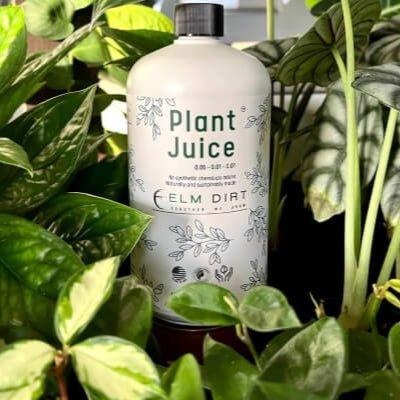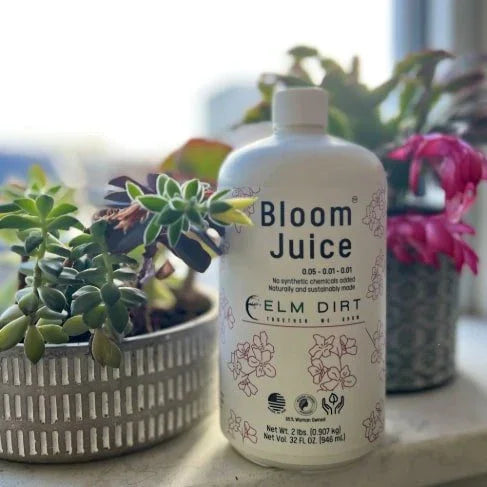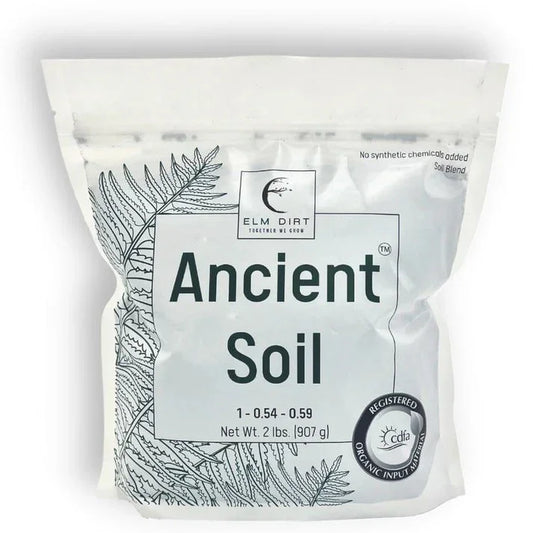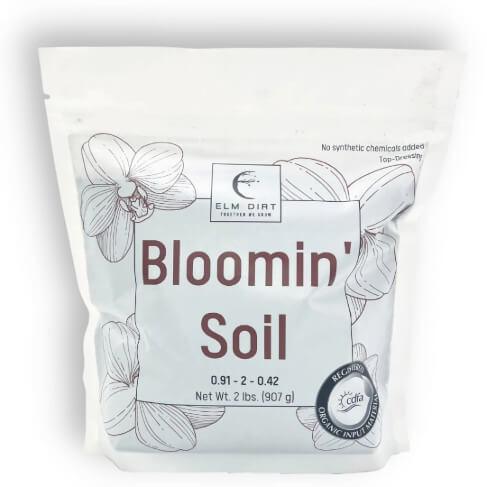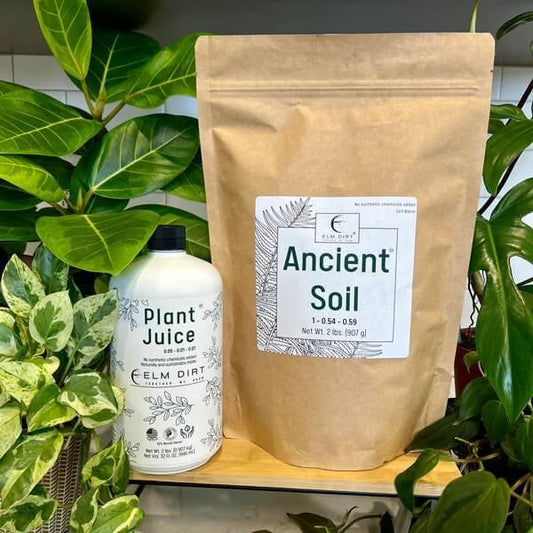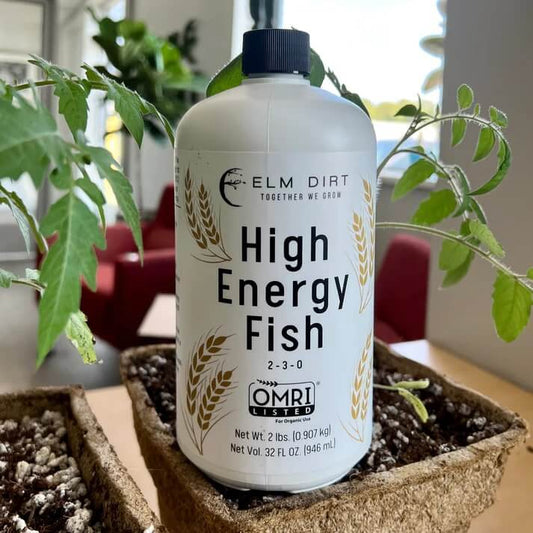
Nancy isn't alone. Thousands of gardeners have discovered that growing bigger, healthier vegetables isn't complicated - it's about providing the right nutrition at the right time with proven organic methods. Whether you're dreaming of fresh tomatoes or wanting to maximize your harvest, this guide shows you exactly how to create a thriving vegetable garden using time-tested organic principles.
Why Most Vegetable Gardens Fail (And How to Avoid These Mistakes)

After helping thousands of gardeners achieve success, we've identified the most common reasons why vegetable gardens underperform:
The Top 5 Vegetable Garden Mistakes:
- Poor soil preparation - Starting with depleted or compacted soil
- Wrong fertilizer timing - Feeding plants when they can't use nutrients effectively
- Synthetic fertilizer damage - Burning plants and killing beneficial soil life
- Inconsistent care - Sporadic watering and feeding schedules
- Ignoring plant stages - Using the same approach for growth and fruiting phases
The good news? Every single one of these problems has a simple organic solution that will transform your garden's productivity.
The Science of Successful Vegetable Gardening
Understanding What Vegetables Really Need
Vegetables are among the most nutrient-hungry plants you can grow. They're bred for rapid growth and high production, which means they need consistent access to macronutrients, micronutrients, beneficial microbes, and organic matter.

❌ Synthetic Fertilizers Problems:
- Burn tender roots and leaves
- Kill beneficial soil microbes
- Create salt buildup in soil
- Lead to weak, pest-susceptible plants
- Require increasingly higher applications
✅ Organic Fertilizers Benefits:
- Feed plants gently without burning
- Introduce beneficial soil microbes
- Build soil biology between applications
- Create stronger, more resilient plants
- Improve soil structure over time
The Two-Phase Approach to Vegetable Garden Success
The secret to maximizing your vegetable harvest lies in understanding that plants have two distinct phases with different nutritional needs:

🌱 Phase 1: Vegetative Growth
When: From planting until flowering begins
Focus: Building strong roots, stems, and healthy foliage
Key nutrients: Nitrogen and potassium
Plant Juice provides:
- 250+ beneficial bacteria and fungi
- Nitrogen-rich organic nutrition
- Root-building compounds
- Disease-resistant development

🌸 Phase 2: Flowering & Fruiting
When: When flowers appear through harvest
Focus: Supporting flower development and fruit production
Key nutrients: Phosphorus, magnesium, calcium
Bloom Juice provides:
- 150+ flowering-specific microbes
- Phosphorus for flower development
- Calcium for fruit quality
- Stem-strengthening compounds
Vegetable-Specific Growing Strategies
Tomatoes: Garden Champions
Early Season Strategy:
- Plant Juice weekly for first 6-8 weeks
- Use 3 oz per gallon every 7-10 days
- Build strong root systems and stems
Production Phase:
- Switch to Bloom Juice when flowers appear
- Continue every 10-14 days through harvest
- Prevents blossom end rot with calcium
Peppers: Sweet to Spicy Success
Vegetative Phase:
- Plant Juice every 10-14 days
- Builds strong, bushy plants
- Establishes extensive root systems
Production Phase:
- Bloom Juice triggers flower production
- Supports long harvest season
- More peppers with better flavor
Leafy Greens: Quick & Continuous
Best Approach:
- Plant Juice every 7-10 days throughout cycle
- Consistent nitrogen for tender leaves
- Multiple plantings every 2-3 weeks
- Cut-and-come-again harvesting
Perfect for: Lettuce, spinach, kale, arugula
Root Vegetables: Underground Gold
Growing Strategy:
- Plant Juice builds strong tops early
- Reduce nitrogen as roots develop
- Stop fertilizing 2-3 weeks before harvest
- Focus on soil structure and drainage
Best for: Carrots, radishes, beets, turnips
Beans & Peas: Nitrogen Fixers
Care Strategy:
- Light Plant Juice at planting
- Bloom Juice supports heavy pod production
- Less feeding needed than other crops
- Focus on consistent moisture
Bonus: Fix nitrogen for next year's crops
Seasonal Vegetable Garden Success Calendar

Spring: Foundation (Mar-May)
- Soil preparation with organic matter
- Start seeds with diluted Plant Juice
- Begin weekly feeding schedule
- Install support structures
- Plan garden layout
Summer: Peak Production (Jun-Aug)
- Plant Juice every 7-10 days
- Switch to Bloom Juice for fruiting
- Daily harvest keeps plants producing
- Succession plant every 2-3 weeks
- Consistent watering crucial
Fall: Season Extension (Sep-Nov)
- Continue feeding cool season crops
- Reduce frequency as growth slows
- Protect from early frosts
- Start fall plantings in late summer
- Clean up spent plants
Winter: Planning & Prep (Dec-Feb)
- Review season's successes
- Order seeds and plan layout
- Study crop rotation principles
- Maintain tools and equipment
- Stock up for next season
Container Vegetable Gardening Success

Growing vegetables in containers requires more intensive nutrition management, but many gardeners actually get better results than in ground gardens!
Container Success Strategy:
- Soil selection: Use All-Purpose Soil Mix for excellent drainage
- Feeding frequency: Plant Juice every 5-7 days (more than ground growing)
- Container size: Minimum 5 gallons for tomatoes, bigger is better
- Water management: Check daily, water when top inch is dry
Troubleshooting Common Vegetable Garden Problems

Poor Germination
Causes: Old seeds, poor soil, wrong temperature
Solutions: Fresh seeds, improve soil with All-Purpose Soil Mix, proper temperature
Slow Growth
Causes: Poor nutrition, compacted soil, insufficient light
Solutions: Apply Plant Juice weekly, improve soil structure, ensure 6+ hours sunlight
Blossom End Rot
Causes: Calcium deficiency, inconsistent watering
Solutions: Use Bloom Juice (contains calcium), consistent moisture
Poor Fruit Set
Causes: Excessive nitrogen, poor pollination, stress
Solutions: Switch to Bloom Juice, hand pollinate, consistent care
Building Your Vegetable Garden Success System
Starter Kit
Perfect for new gardeners:
- Plant Juice (32 oz) - $19.95
- Bloom Juice (32 oz) - $19.95
- All-Purpose Soil Mix (6 lbs) - $39.95
- Plant Perfection (16 oz) - $14.95
Total: $94.80
Covers 100 sq ft garden for full season
Complete System
Most popular choice:
- Plant Juice (2.5 gallon) - $89.95
- Bloom Juice (2.5 gallon) - $89.95
- All-Purpose Soil Mix (multiple bags)
- Plant Perfection for pest prevention
ROI: $600-1,200 worth of vegetables
For serious vegetable gardeners
Commercial Scale
For market gardens:
- 55-gallon drums for efficiency
- Custom application schedules
- Volume pricing available
- Technical support included
Maximum yields for commercial production
Advanced Techniques for Maximum Production

Companion Planting for Better Results
🍅 + 🌿 Tomatoes & Basil
Improved flavor and natural pest control. Basil repels aphids and hornworms.
🌽 + 🫘 + 🥒 Three Sisters
Corn supports beans, beans fix nitrogen, squash shades soil and deters pests.
🥬 + 🍅 Lettuce & Tall Plants
Lettuce benefits from afternoon shade provided by taller plants.
🌼 Marigolds Throughout
Natural pest deterrent that protects entire garden from harmful insects.
Vertical Growing Strategies
Maximizing Space with Vertical Growing:
- Trellises: Essential for climbing plants like beans, peas, cucumbers
- Staking and caging: Support heavy producers like tomatoes and peppers
- A-frame structures: Perfect for small spaces and container gardens
- Hanging baskets: Great for trailing varieties like cherry tomatoes
Nutrition tip: Vertical plants often need more frequent feeding - apply Plant Juice every 5-7 days.
The Economics of Vegetable Garden Success
Investment Breakdown
- Complete organic system: $150-200
- Seeds and plants: $30-50
- Basic tools: $50-100
- Total first year: $230-350
Expected Returns
- Typical yield value: $800-1,600
- ROI: 300-600% annually
- Better nutrition: Priceless
- Net profit: $450-1,250
High-Value Crops for Maximum Return
Premium Herbs
$50+ per pound retail, continuous harvest, minimal space required
Heirloom Tomatoes
$6-8 per pound, heavy yields, superior flavor
Specialty Lettuce
$8-12 per pound, quick turnaround, succession planting
Hot Peppers
$15+ per pound, long harvest, excellent storage
Customer Success Stories That Inspire
Real Results from Real Gardeners
Brian B.: "Tomatoes shot up a foot and half in just a few weeks using Plant Juice! Everything is really beautiful and healthy. Both bananas are really healthy grown a foot taller."
Nancy S.: "This the best vegetable garden yet!! Even though my tomato plants have a virus it's still producing leaves and fruit. My long sweet pepper plants are 5' high. Wow"
Susie B.: "I can't believe how everything is growing so well! The radishes were the biggest I have ever had and the bean plants are just loaded with beautiful long green beans."
Julie R.: "My strawberry plants are huge and the veges in beds and pots are ahead in growth in 2 months of use."
Your Action Plan for Vegetable Garden Success
The Proven 5-Step Formula:
- Start with good soil - Use All-Purpose Soil Mix for proper drainage and nutrition
- Feed consistently - Plant Juice for growth, Bloom Juice for production
- Water properly - Deep, consistent watering prevents stress
- Prevent problems - Healthy plants resist pests and diseases naturally
- Harvest regularly - Keeps plants producing throughout the season
Your success is our success. We've helped thousands of gardeners achieve their "best vegetable garden yet," and we're here to help you do the same.
Ready to Grow Your Best Vegetable Garden Yet?
Join thousands of successful gardeners who've discovered the power of organic nutrition for bigger, healthier vegetables.
180-Day Guarantee: Not satisfied? Full refund, no questions asked.
Need Expert Growing Advice?
Our vegetable gardening experts are here to help you succeed!
Monday-Friday, 9AM-5PM CST • Kansas City, Missouri
Expert Growing Resources
Seasonal Growing Guide
Month-by-month vegetable garden care schedule for maximum harvests.
Fertilizer Calculator
Calculate perfect Plant Juice and Bloom Juice ratios for your garden size.
Problem Solving Guide
Solutions for common vegetable garden problems and challenges.
Liquid Fertilizer Guide
Complete guide to using liquid organic fertilizers effectively.






